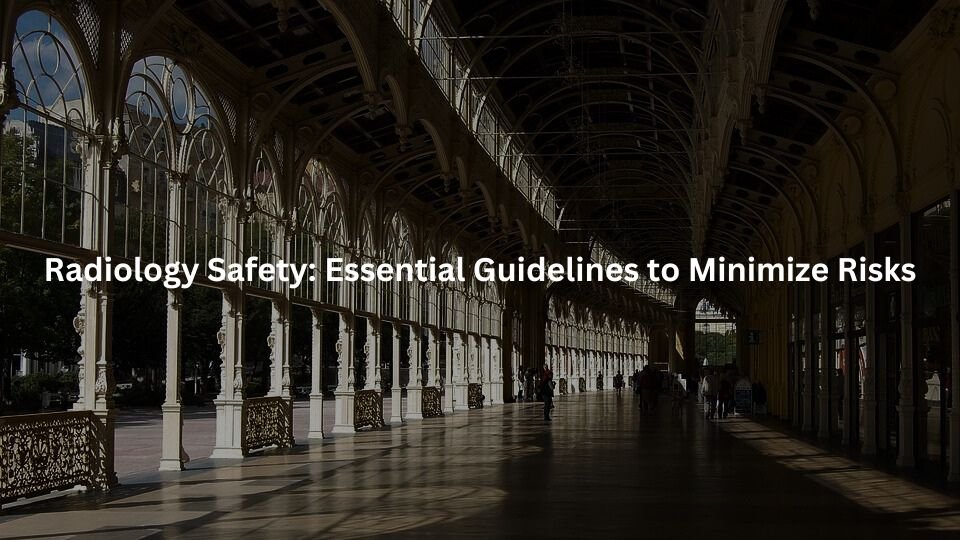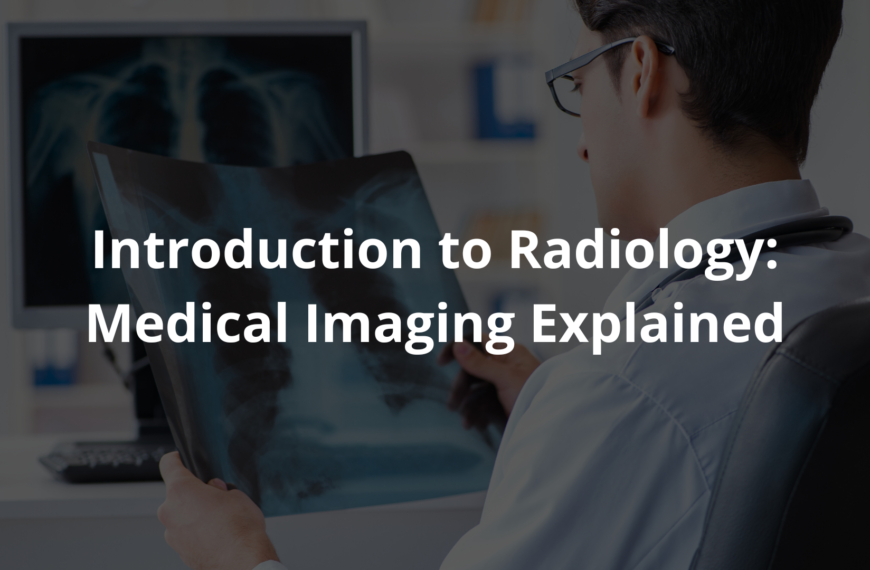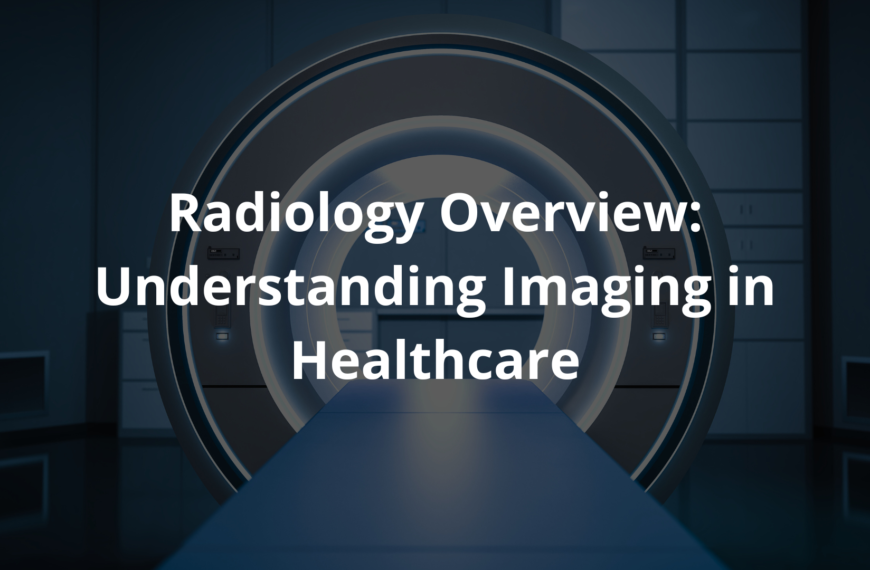Learn how to reduce radiation risks in medical imaging with expert-backed safety practices and essential guidelines.
Radiology safety is crucial in medical imaging to ensure the protection of both patients and medical staff. With growing concerns over radiation exposure, it’s essential to follow proven guidelines that Minimise risks. This article outlines key radiation safety principles, the best practices for various imaging procedures, and the importance of ongoing training for professionals.
Key Takeaway
- Optimise Radiation Exposure: Use the lowest possible dose to achieve accurate diagnostics and adhere to ALARA principles.
- Protect Vulnerable Groups: Special precautions are needed for pregnant women, children, and other sensitive populations.
- Stay Compliant: Regularly update radiation management plans and ensure proper machine registration for safety and legal compliance.
Key Radiation Safety Guidelines (RANZCR)
In radiology, the primary rule is justification: the benefits must always outweigh the risks of radiation exposure. Every imaging decision should be based on the question, “Is this necessary?” For example, an X-ray of a sore knee may be essential to check for fractures, but if the risk is low, alternatives like an MRI, which doesn’t involve radiation, should be considered.
- Justification: Ensure the imaging procedure is truly necessary.
- Alternative methods: Consider non-radiation options like MRI or ultrasound when suitable.
ALARA (As Low As Reasonably Achievable) is another key guideline. The principle focuses on using the smallest radiation dose possible to still obtain accurate results. Higher doses may seem beneficial for clearer images, but they increase risks. Healthcare providers must evaluate all imaging options to minimise exposure.
- ALARA principle: Use the lowest dose for accurate diagnostics.
- Review options: Consider non-radiation methods for equivalent results.
Radiation Management Plans (RMPs) should be in place at every healthcare facility. These plans include procedures, equipment maintenance, and regular audits to ensure safety for both patients and staff.
- RMPs: Develop and regularly update comprehensive safety protocols.
- Regular audits: Monitor and assess radiation levels to maintain safety standards. (1)
Managing Radiation Exposure in Medical Imaging
Diagnostic Reference Levels (DRLs) are vital for optimising radiation doses during imaging. They act as benchmarks, guiding radiologists on what constitutes an acceptable radiation dose, ensuring it’s not excessive while maintaining diagnostic quality.
- DRLs: Use as benchmarks to optimise radiation doses.
- Minimise exposure: Ensure doses align with the necessary diagnostic results.
Safety protocols are crucial for handling imaging equipment. With devices like X-rays and mammography, managing radiation exposure involves controlling beam strength and shielding. Regular maintenance and equipment checks are necessary to ensure safety and effectiveness.
- Safety protocols: Properly manage radiation beams and shielding.
- Equipment maintenance: Regular checks to ensure equipment safety.
Special Safety Considerations for Vulnerable Populations
For pregnant women, minimising radiation exposure is critical, as even small doses can affect the fetus. Non-radiation alternatives, like ultrasound or MRI, are often recommended.
- Pregnancy: Prioritise non-radiation imaging when possible.
- Minimise exposure: Use shielding and low-dose techniques if imaging is necessary.
Children are more sensitive to radiation, and their smaller size means they absorb higher doses. Adjusting radiation doses and considering non-ionising imaging methods like ultrasound or MRI is essential for young patients. (2)
- Children: Adjust doses for size and age, and prefer non-ionising imaging methods.
Radiation Safety in Common Medical Imaging Procedures
Best practices in X-rays, mammography, and dental X-rays focus on minimising radiation. For X-rays, proper positioning and using the lowest exposure settings are key. In mammography, dose management is crucial due to denser tissue in the breast, while dental X-rays use protective gear to shield the body from stray radiation.
- X-rays: Use lowest exposure settings and proper positioning.
- Mammography: Manage doses carefully for denser breast tissue.
- Dental X-rays: Shield patients with lead aprons and use minimal radiation.
MRI procedures don’t involve ionising radiation, but safety concerns include the risks associated with the powerful magnetic fields, especially with implants. Proper screening and equipment maintenance are essential.
- MRI: Screen for implants and maintain equipment to ensure safety.
Radiation Dose and Cancer Risk
Radiation exposure, even in small doses, can increase the risk of cancer over time. While medical imaging doses are generally low, it’s crucial to track cumulative radiation exposure, especially for patients who need frequent imaging.
- Track exposure: Keep accurate records of a patient’s radiation history to manage long-term risk.
- Minimise risk: Monitor cumulative doses to avoid exceeding safe levels.
Regulatory Compliance and Radiation Safety Documentation
Credits: Gian Carlo Millo
To ensure safety, radiation machines must be registered and undergo regular inspections. Documentation of all maintenance and calibration activities must be kept up-to-date to meet Australian regulatory standards.
- Registration: Ensure annual registration and inspections of radiation equipment.
- Up-to-date documentation: Maintain accurate records of all maintenance and safety certifications.
Education and Training for Radiology Professionals
Radiology professionals must undergo ongoing education to stay informed about the latest radiation safety guidelines. Certification programs, such as those from RANZCR, ensure that radiologists and technicians remain knowledgeable and compliant with safety standards.
- Continuous education: Keep up-to-date with the latest safety protocols and imaging techniques.
- Certification: Maintain certification to ensure ongoing competency in radiation safety.
Emerging Technologies and Advances in Radiation Safety
New technologies, like automatic dose control and advanced shielding materials, are making it easier to comply with the ALARA principle. These innovations reduce radiation exposure while improving imaging accuracy.
- New technologies: Use automatic dose control and improved shielding to reduce exposure.
- Non-ionising methods: Ultrasound and MRI are increasingly used as safer alternatives to ionising radiation, especially for vulnerable populations.
Conclusion
Radiation safety is essential for protecting both patients and healthcare staff. By adhering to guidelines like justification, optimisation, and regular radiation management plans, healthcare providers ensure minimal exposure while maintaining diagnostic accuracy.
For vulnerable groups, non-radiation-based alternatives should be prioritised. Ongoing education, advances in imaging technology, and strict regulatory compliance help reduce risks, particularly the long-term risk of cancer. Ultimately, creating a culture of safety in radiology ensures the well-being of patients and staff.
References
- https://www.arpansa.gov.au/sites/default/files/legacy/pubs/rps/rps14_1.pdf
- https://www.safetyandquality.gov.au/sites/default/files/2024-07/implementation-resource-draft-national-safety-and-quality-medical-imaging-standards.pdf




